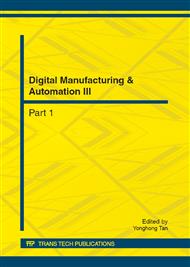p.590
p.595
p.599
p.603
p.609
p.615
p.619
p.627
p.634
Numerical Study on NO Mechanism during High Temperature Air Combustion of Natural Gas
Abstract:
A full nitric oxide mechanism including thermal NO, prompt NO, N2O intermediate model and NO reduction model through reburning was used to calculate the NO formation during high temperature air combustion of natural gas in industrial furnace. The turbulent transportation was simulated by Reynolds stress model (RSM) and a modified Eddy-Break-Up (EBU) combustion model was applied to model the combustion process. A three-step reaction scheme of the natural gas combustion reaction was considered. Experimental data from published literature was adopted to validate the present models. Numerical results showed that thermal NO formation mechanism and reburning NO reduction mechanism were the dominant NO models. Reburning NO reduction could not be ignored. Prompt NO gave a small contribution to NO emission and the N2O intermediate model for NO formation was of little importance.
Info:
Periodical:
Pages:
609-614
Citation:
Online since:
July 2012
Authors:
Price:
Сopyright:
© 2012 Trans Tech Publications Ltd. All Rights Reserved
Share:
Citation:


